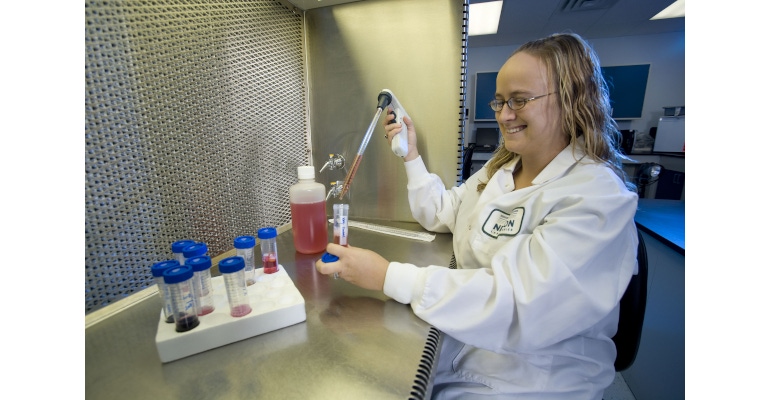The New and Improved ISO 10993-12:2021—What Is Really Changing
While the updated standard features no major revisions, there is more discussion on what to consider for sample preparation.

Every time there is an update to a standard, especially an overarching one like the ISO 10993-12 standard that covers sample preparation recommendations, it comes with a slight dose of anxiety. This is because it might mean there is now a gap between what is expected from the regulation and what was done when the testing or assessment for a medical device was originally performed. This time, however, I must say that the updated document was only slightly modified, without unexpected twists and turns, so everyone can breathe a little easier.
Focus on Biological Testing
The main focus for the update was to clearly divorce the sample preparation recommendations used for biological testing from those for chemical testing (with the latter being thoroughly outlined in ISO 10993-18:2020). Therefore, ISO 10993-12:2021 now clearly states that it defines requirements and gives guidance on the procedures in the preparation of samples and the selection of reference materials for medical device testing primarily in biological test systems in accordance with one or more parts of the ISO 10993 series.
The recommended sample preparation parameters captured in section 10.3.1 remained basically unchanged. The only addition was the emphasis of using the conditions for limited contact devices primarily in the cytotoxicity test [(37 ± 1) °C for (24 ± 2) hours]. Further clarification on extracting prolonged/long-term contacting devices was also provided. It indicates that for these types of medical devices, “extraction times of 72 h are recommended for cytotoxicity testing because extraction for 24 h may not be sufficient to obtain an extract that represents the chemicals released beyond 24 h of device use. However, if there are data available for the prolonged or long-term tissue-contacting devices which demonstrate that 24 h extraction is sufficient to release extractables/leachables from the device and extending the extraction time to 72 h does not result in release of additional chemicals from the device, the 24 h extraction is sufficient.”
While no major changes or revisions were included in the recommended sample preparation conditions, it does feel like there has been a shift in the intent of the guidance. This shift is to encourage manufacturers to think about the specific device being assessed, what makes sense in terms of the materials used, and the relevant clinical use conditions that should be considered during the biological testing setup. This comes from the fact that the medical devices themselves, as well as the materials they are made from, are becoming increasingly more complex, so standard evaluation methods might not be relevant or feasible. That being said, we should always keep in mind that the main purpose of the extractions typically used in biological testing is to obtain a test sample that is expected to be at least as aggressive as the conditions of clinical use.
For example, the new ISO 10993-12:2021 highlights that an extraction using both polar and non-polar extraction vehicles is typically recommended. However, “in some device specific circumstances, it may be appropriate to extract in only one extraction vehicle, either polar or non-polar,” such as in the case of a syringe pre-filled only with saline that will exclusively come into contact with saline/polar solvent and no other fluid. Furthermore, a statement of solvent compatibility was included to highlight that, “Selected solvents should not compromise (e.g., severe swelling, particulate generation and degradation) the medical material or devices.”
Complex Materials
Also, additional guidance regarding how to handle absorbable materials and medical devices containing such materials is now included in the updated standard. It provides some additional aspects to consider when testing these types of devices, like defining the appropriate temperature (based on thermal properties of the material and relevant clinical use conditions), potential impact to pH or osmolarity during extractions, etc. The guidance clearly states that, “For these materials, the extracts prepared based on 10.3 may have changes either in osmolarities or in the pH that may not be appropriate for the test system to be dosed. Any adjustment applied to the extracts prior to biocompatibility testing should be justified.” References to specific guidance documents, such as ISO 10993-3 (genotoxicity), ISO 10993-6 (implantation), ISO 10993-13 (degradable polymerics), ISO 10993-14 (degradable ceramics), ISO 10993-15 (degradable metals and alloys), ISO 10993-18 (chemical characterization), and ISO/TS 37137-1 (absorbable medical devices) are provided. It also recommends that “For absorbable materials that could potentially have toxic degradants and residuals, testing of intermediate products should be considered.” Or alternatively, a complete dissolution of the device may also be appropriate, if justified; however, “caution should be taken since complete device dissolution can create challenges for subsequent biological testing (e.g., difficulty in dosing animals with neat test extract if viscosity is increased, difficulty in interpreting in vitro cell-based test failure data in case of increased osmolality or pH change).” The guidance also indicates that if an absorbable device is tested neat and “if the resulting solution contains all the constituents of the material, a second vehicle would not be needed.” Similarly, additional guidance was provided for in situ polymerizing materials for preparing a test sample that represents the intended clinical use conditions to provide information on the potential toxicity of the reacting components in the polymer during the curing process. Reference to nanoparticles and ISO 10993-22 was added into the guidance; however, due to their varied nature, not much more specific information was included in ISO 10993-12 other than a reference to the standard (ISO 10993-22) that should be consulted for more information.
Sample Preparation
Other critical components of the sample preparation step are the extraction ratio to be used as well as what specifically can and should be included in the surface area calculations of a test sample. If any way possible, only the patient/user-contacting parts should be included in the test sample. The guidance highlights that, “Non-patient contacting portions of the medical device should, if possible, be excluded either physically from test sample extracts or by exclusion of the surface area in the calculation of the extraction ratio.” As seen in the previous revision of the standard, the surface area remains the preferred parameter over weight of the sample when determining the extraction ratio for sample preparation, unless the surface area cannot be defined or the weight-based approach is demonstrated to be worse case. Also, another typical issue we face during sample preparation is when a device has various components of different thickness. In this case, is it appropriate to use the standard 3 cm2/mL or is the more stringent 6 cm2/mL more appropriate? Table 1 in ISO 10993-12 now recommends that if the medical device includes multiple tissue contacting components with different thicknesses, a way to address this is to base the ratio on the thinnest material layer of that component, which then would be the worst-case scenario.
In all, the changes imply that a more-thorough sample preparation thought process is now required and expected. However, I would also highlight that discussions with regulatory bodies prior to conducting the testing are always recommended (when diverging from the standard parameters) to ensure the thought process is also acceptable to the agencies reviewing your submissions.
About the Author(s)
You May Also Like



.png?width=300&auto=webp&quality=80&disable=upscale)
